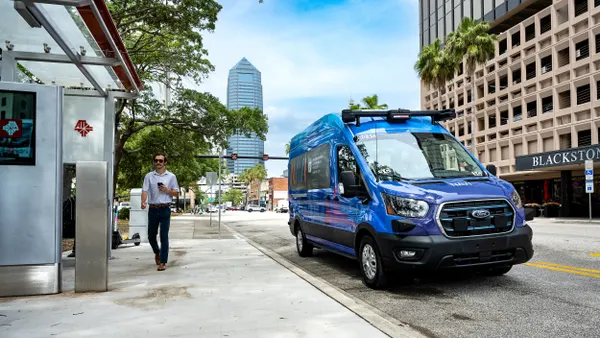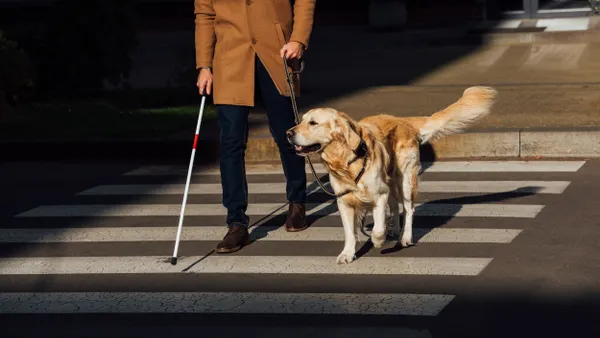Dive Brief:
- A newly-released Gallup survey of U.S. adults' attitudes toward artificial intelligence and self-driving cars found 54% of adults are "unlikely" to use autonomous vehicles.
- The same survey found 59% of adults would feel uncomfortable riding in a fully self-driving car on a daily basis, and 62% of adults would feel uncomfortable sharing the road with fully self-driving trucks. In all three parts of the survey, the percentage of adults who felt opposed to self-driving technology increased with age.
- The survey, completed by 3,297 adults, was conducted from Sept. 15 through Oct. 10, 2017.
Dive Insight:
While the Gallup survey illustrated a significant sample of adults who are not ready for self-driving cars on the road, an autonomous future may be inevitable. Autonomous vehicles (AVs) are the next step in the evolution of mobility, and some analysis suggests 10 million AVs will be on the road worldwide in the next two years. Most leading car manufacturers and private ride-sharing services are testing autonomous technology, and some self-driving trucks already embark on interstate journeys to deliver goods.
Though the majority of this sample of surveyed adults may not feel ready to willingly hop in the passenger seat of an AV, a recent Deloitte survey found more U.S. adults perceive AVs as safe in 2018 than they did the year prior. Even if adults aren't quite ready to get into the vehicles, the gradual increase in consumer confidence highlights the increasing normality of AVs.
This consumer confidence is likely to continue increasing, as indicated by the way acceptance correlates with age. In all three parts of the Gallup survey, adults aged 18-35 were significantly more accepting and comfortable with self-driving tech than those older in age.
As with most technologies, acceptance develops over time, and younger generations are understandably more conditioned to feel prepared for a societal shift toward autonomous tech. If anything, this data indicates that cities, auto manufacturers and ride-share services must do more to ensure seniors are ready for and will benefit from the shift, as well.











